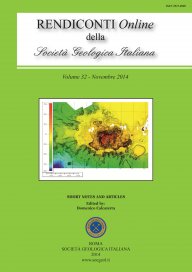
The Ingelsberg landslide (Bad Hofgastein, Austria): description and first results of monitoring system (GBInSAR technique)
Saverio Romeo (a), Daniel Scott Kieffer (b) & Lucio Di Matteo (c)
(a) Department of Physics and Geology, University of Perugia, via A. Pascoli snc, 06123, Perugia, Italy. e-mail: saverioromeo7@gmail.com
(b) Institute of Applied Geosciences, Graz University of Technology, Rechbauerstrasse, 12/EG, A-8010, Graz, Austria. e-mail: kieffer@tugraz.at
(c) Department of Physics and Geology, University of Perugia, via A. Pascoli snc, 06123, Perugia, Italy. e-mail: lucio.dimatteo@unipg.it (Corresponding Author)
Volume: 32/2014
Pages: 24-27
Abstract
The present work shows the first results of a monitoring campaign performed at the Ingelsberg slope in Bad Hofgastein (Austria). The Groung-Based Interferometric Synthetic Aperture Radar (GBInSAR) was used to create displacement maps, providing information on the location and magnitude of the phenomena studied.
These information provide a significant support to decision makers during landslide emergencies, allowing the civil protection authorities to assess the risk and to manage an efficacious emergencies response. In detail, the landslide assessment and the correlation of the GBInSAR data with meteorological data and those obtained by other monitoring instruments are discussed highlighting the open problems related to data acquisition, processing and analysis.
Keywords
Get Full Text